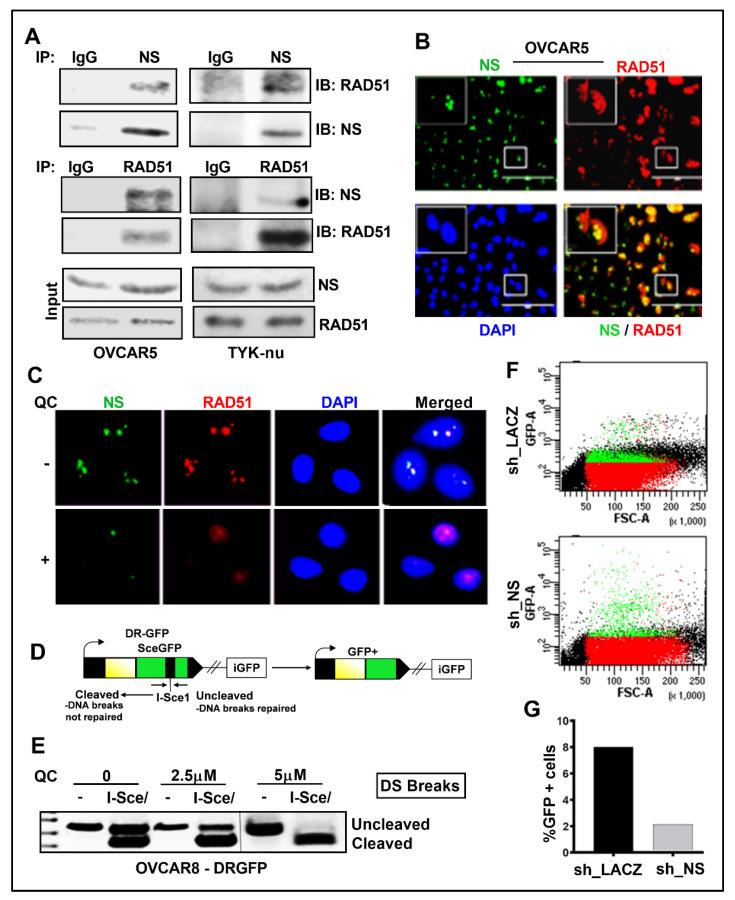Figure 4.
QC impairs the association of NS with RAD51 in OC cells. (A) OVCAR5 and TYK-nu cell extracts were immunoprecipitated with anti-NS and the co-precipitated RAD51 was detected by western analysis and vice versa. (B) IF analysis shows NS (Green) colocalizes with RAD51 (Red) (Merged image-yellow) in OVCAR5 cells. DAPI was used to stain the nuclei. (C) IF analysis shows that treatment with 2.5 µM QC disrupts NS (Green)–RAD51 (Red) association. DAPI was used to stain the nuclei. (D) PCR strategy for evaluating repair by HR. (E) Expression of I-SceI in OVCAR-8DR-GFP cells was performed to assess the repair of the DSB in the cells. Cells that can undergo HR repair through a short-tract gene conversion without crossing over become GFP positive. Representative gel image was shown after PCR amplification and digestion with I-SceI. (F,G) Repair is measured as the percentage of GFP positive cells in OVCAR-8DR-GFP cells, which is normalized to the NTC samples transfected in parallel by flow cytometry analysis. Abbreviations: QC: Quinacrine; NS: Nucleostemin, IP/IB: immunoprecipitation/immunoblot; IgG: Immunoglobulin G control; DS: double-strand break; GFP: green fluorescent protein; NTC: non-targeted control, sh_NS: shRNA-mediated NS downregulation; OVCAR8-DR-GFP: OVCAR8 cells with stable integration of pDR-GFP plasmid; I-Sce: Intron-encoded endonuclease.

